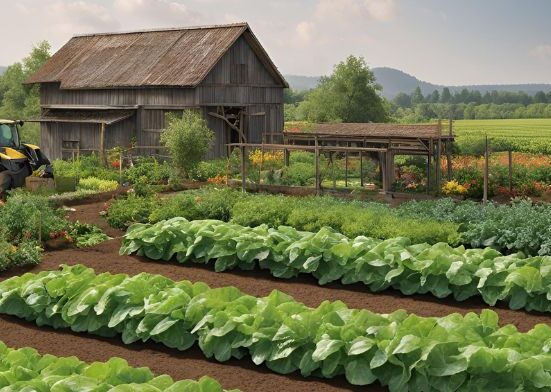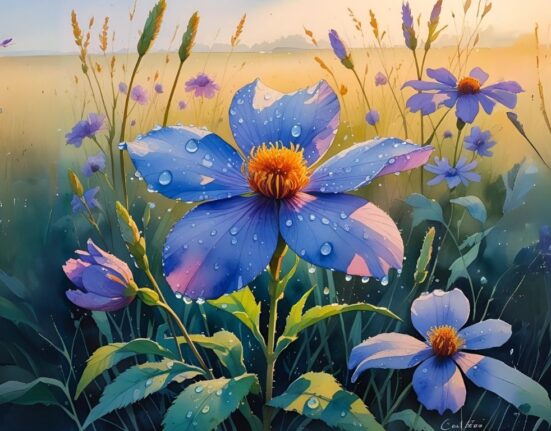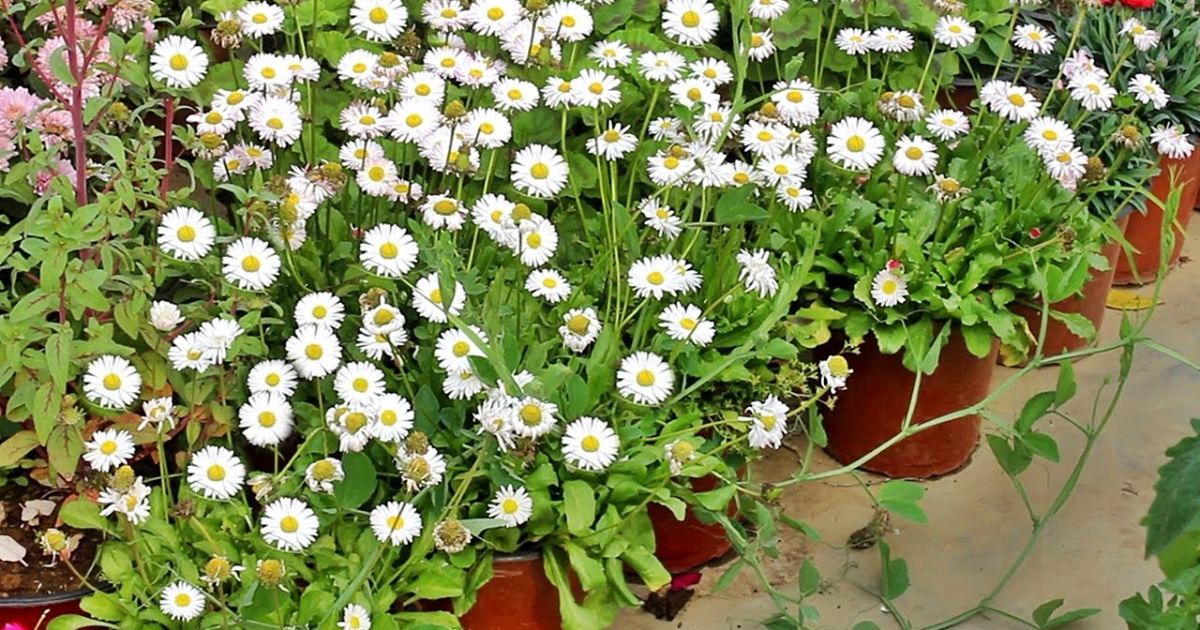Perennials are the backbone of many gardens, valued for their ability to return year after year with minimal care. Unlike annuals, which complete their life cycle in a single season, perennials have a unique growth pattern that allows them to survive through changing seasons and thrive over multiple years. Understanding how perennials grow is key to cultivating a healthy, vibrant garden.
From their underground root systems that store energy to their seasonal cycles of sprouting, flowering, and dormancy, perennials follow a fascinating natural rhythm. In this post, we’ll explore the growth process of perennials, the factors that influence their development, and practical tips for keeping these resilient plants thriving in your garden year after year.
What Are Perennials?
Perennials are plants that live for more than two years, often producing flowers or foliage repeatedly throughout their lifespan. Unlike annuals, which only need one growing season to complete their life cycle, or biennials, which take two years to complete their cycle, annual flowers perennials have the remarkable ability to survive through multiple seasons, returning year after year.
Examples of Perennials
- Flowering plants: Peonies, daylilies, and coneflowers.
- Herbs: Lavender, mint, and rosemary.
- Shrubs: Hydrangeas, lilacs, and boxwood.
Key Characteristics
- Longevity: Perennials can live for several years, with some species surviving decades.
- Seasonal Growth Cycles: They undergo periods of dormancy and active growth depending on the season.
- Energy Storage: Many perennials store nutrients in underground structures such as bulbs, rhizomes, or tubers, allowing them to survive adverse conditions.
Benefits of Planting perennial
- Low Maintenance: Once established, perennials require less frequent replanting.
- Soil Health: Their deep roots improve soil structure and prevent erosion.
- Seasonal Beauty: Many perennials bloom year after year, Are Sunflowers Perennials? Exploring Their Lifecycle and Growing Tips adding continuous color and interest to gardens.
Understanding what perenial are and their unique qualities is the first step in learning how to take care of them so they can grow as much as possible in your garden.
The Life Cycle of Perennials
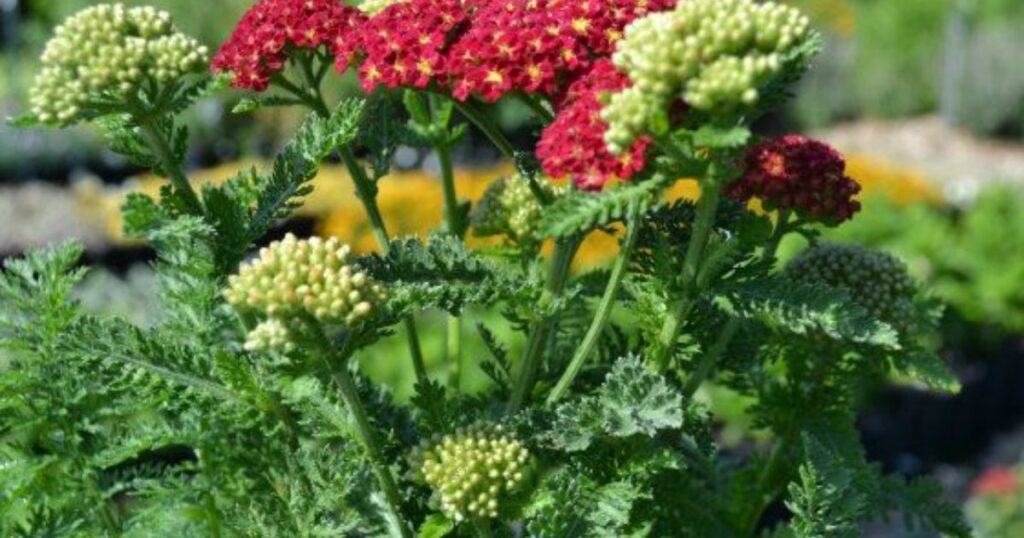
Perennials follow a fascinating life cycle, cycling through growth, dormancy, and rebirth. Let’s break it down into key stages to see how these plants thrive.
Germination and Establishment
The journey begins with a seed or a young plant. Seeds germinate when conditions align with adequate moisture, warmth, and light to spark life. Tiny roots anchor into the soil, while shoots reach for sunlight. For example, a coneflower seed sprouts in spring, sending out delicate leaves. During this stage, gardeners water consistently and shield young plants from pests.
If starting with a nursery-grown perennial, like a daylily, you plant it directly into the ground or a container. The plant focuses energy on establishing roots, building a foundation for future growth. I recommend amending the soil with compost to boost nutrient availability during this phase.
Vegetative Growth
Once established, perennials enter a vigorous growth phase. Stems elongate, leaves expand, and roots deepen. This stage often spans the first year or two, depending on the species. For instance, peonies may take a couple of seasons to bloom, but develop robust foliage in the meantime.
Photosynthesis powers this growth. Drip Irrigation Leaves capture sunlight, converting it into energy to fuel cell division. Water and nutrients like potassium and nitrogen are absorbed by roots from the soil. Gardeners support this phase by fertilizing lightly and ensuring proper spacing to prevent competition. I mulch around plants to retain moisture and suppress weeds, which can choke young perennials.
Flowering and Reproduction
When mature, perennials burst into bloom. The attraction of flowers to pollinators like bees and butterflies is evident in the case of black-eyed Susans, whose bright yellow petals draw pollinators, leading to seed formation. Some perennials, like iris, also spread through rhizomes, underground stems that produce new shoots.
Timing varies. Early bloomers, like columbine, epic gardening in spring, while others, like asters, shine in fall. Deadheading, removing spent flowers, encourages more blooms and prevents energy waste on seed production. I pinch back faded blooms to keep plants tidy and promote prolonged flowering.
Dormancy
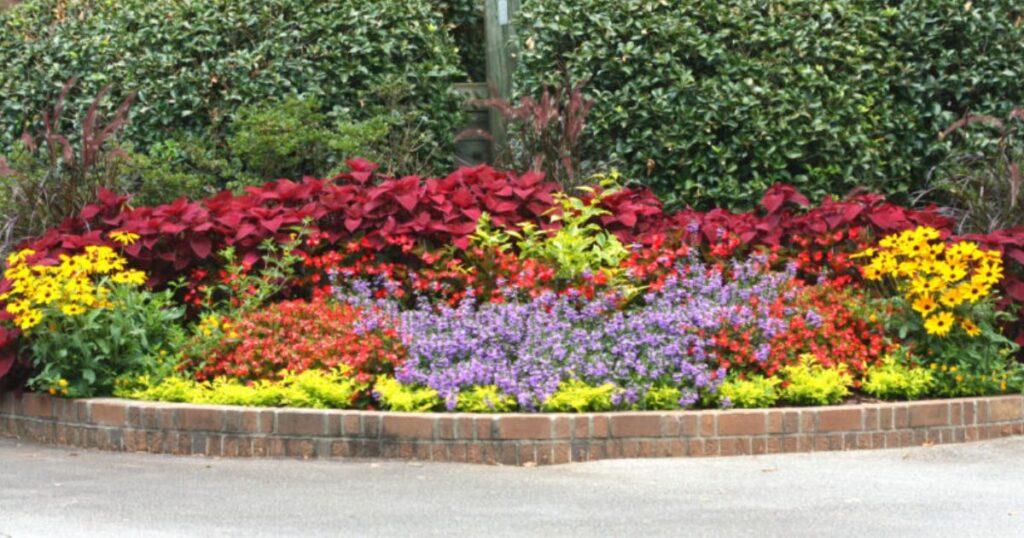
As seasons shift, most perennials enter dormancy, a survival strategy to endure harsh conditions. In colder climates, plants like hostas die back to the ground, storing energy in roots or crowns. Evergreen perennials, such as lavender, retain leaves but have slow growth. Dormancy protects plants from freezing temperatures or drought.
Gardeners prepare plants for dormancy by cutting back dead foliage in late fall and applying mulch for insulation. I avoid heavy pruning in the fall for species like ornamental grasses, as their stems add winter interest and protect roots.
Regrowth
Spring triggers regrowth. Stored energy in roots fuels new shoots. For example, daffodils push up green tips as the soil warms. outdoor gardening This cycle repeats annually, with plants often growing larger and producing more flowers over time. Dividing overcrowded perennials, like daylilies, every few years rejuvenates them and prevents decline.
How Perennials Grow: Key Mechanisms
Perennials owe their resilience to unique biological traits. Let’s explore the mechanisms driving their growth.
Root Systems
Roots anchor autumn blooming perennials and absorb water and nutrients. Many perennials develop deep taproots, like those of lupines, which access water far below the surface. Others, like hostas, form fibrous roots that spread widely, stabilizing soil and gathering resources. Some, such as irises, grow from rhizomes or bulbs, which store energy for regrowth.
Gardeners enhance root health by loosening compacted soil and adding organic matter. I test soil pH to ensure it suits the plant; most perennials thrive between 6.0 and 7.0. Regular watering, especially during dry spells, supports root development.
Perennating Structures
fine gardening survive adverse conditions through perennating structures, specialized organs that store energy. These include:
- Rhizomes: Horizontal underground stems, Zinnia Perennial: A Colourful Bloom That Keeps Coming Back like those in irises, produce new shoots and roots.
- Bulbs: Swollen underground storage organs, as in tulips, hold nutrients for spring growth.
- Tubers: Thickened roots, like those of dahlias, store starches.
- Crowns: The base of the plant, as in peonies, where roots and shoots meet.
These structures allow perennials to “hibernate” during unfavorable conditions. I protect them by mulching in winter to insulate against frost.
Photosynthesis and Energy Storage
Perennials rely on photosynthesis to produce energy. Leaves act as solar panels, capturing light to create sugars. These sugars fuel growth and are stored in roots or perennating structures for dormancy. Healthy leaves are critical, so I remove diseased foliage and maintain adequate airflow to avoid fungus problems.
Adaptation to Environment
Perennials adapt to their environment through traits like drought tolerance or cold hardiness. perrenial garden For example, sedums thrive in dry conditions, while astilbes prefer moist shade. Selecting plants that are appropriate for your soil and climate is known as “right plant, right place,” which ensures success. I check USDA hardiness zones to match plants to my region.
Caring for Perennials: Practical Tips
Growing perennials requires active care to maximize their potential. Here’s how to nurture them through each stage.
Planting
Plant perennials in spring or fall for best establishment. Make sure the hole is just twice the root ball’s size and depth. To improve drainage and fertility, add compost to the soil. Place the plant so the crown sits at soil level, then water thoroughly. I space plants according to mature size to avoid overcrowding.
Watering
To promote deep roots, water deeply but sparingly. Newly planted perennials need consistent moisture, about 1 inch per week. Established plants often tolerate drought, How Can Farmers Cut Waste in Sustainable Agriculture but I monitor for wilting during heatwaves and water as needed. Drip irrigation or soaker hoses deliver water efficiently without wetting foliage.
Fertilizing
Feed perennials sparingly. flower annuals A balanced fertilizer (10-10-10) in spring supports growth, but overfertilizing leads to weak, leggy plants. I apply compost or slow-release fertilizer annually and avoid feeding in late summer to prevent tender growth before dormancy.
Pruning and Deadheading
Prune to shape plants and remove dead or diseased parts. Deadhead flowers to extend blooming and maintain appearance. For example, perennial flower garden ideas I cut back spent coneflower blooms to encourage a second flush. In fall, trim herbaceous perennials to a few inches above ground, but leave evergreen types intact.
Dividing
Divide perennials every 3–5 years to prevent overcrowding and rejuvenate growth. Dig up the plant, separate roots with a sharp knife, and replant divisions. Spring is ideal for fall-bloomers like asters, while summer-bloomers like daylilies divide well in fall. I water divisions well to help them settle.
Pest and Disease Management
Monitor for pests like aphids or diseases like powdery mildew. I use insecticidal soap for soft-bodied pests and remove affected foliage to control disease. Healthy plants are better equipped to resist issues, so I prioritize good soil, spacing, and watering practices.
Winter Protection
In cold climates, mulch perennials with straw or shredded bark after the ground freezes to insulate roots. For tender perennials, like dahlias, I dig up tubers and store them indoors. Check for heaving when frost pushes roots out of the soil and gently press plants back into place.
Designing with Perennials
Perennials shine in garden design, offering endless possibilities. Combine early, mid, and late bloomers for continuous color. For example, plant spring-blooming peonies with summer daylilies and fall asters. Mix textures, feathery ferns with bold hostas for visual interest. I group plants with similar needs, like sun-loving coneflowers and salvias, to simplify care.
Consider height and spread. Tall perennials, like delphiniums, work well at the back of borders, while low-growers, like creeping phlox, edge pathways. I sketch my garden layout to ensure balance and avoid overcrowding.
Common Perennial Challenges and Solutions
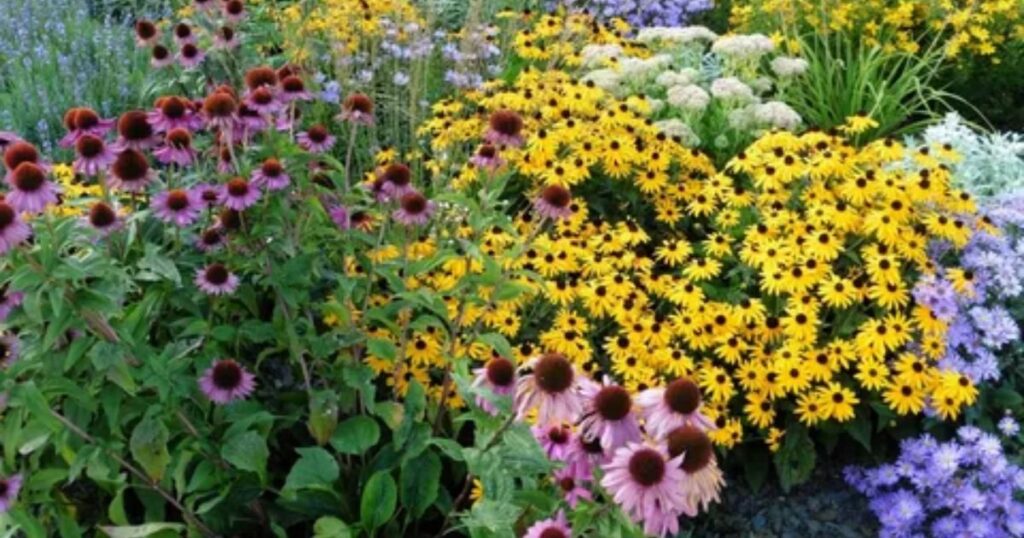
Even seasoned gardeners face challenges. Here are solutions to common issues:
- Poor Blooming: Check for too much shade, overcrowding, or nutrient imbalance. Move plants to sunnier spots or divide them.
- Pest Damage: Inspect regularly and use organic controls like neem oil. Attract beneficial insects with companion plants like marigolds.
- Winter Dieback: Ensure proper mulching and select cold-hardy varieties. I check hardiness zones before buying.
- Overgrowth: Divide or prune aggressively to control vigorous spreaders like bee balm.
Why Grow Perennials?
Perennials reward gardeners with longevity, diversity, and low maintenance once established. They build soil health, support pollinators, and create dynamic landscapes. 10 Stunning Early Spring White Flowering Trees By understanding their growth patterns, germination, vegetative growth, flowering, dormancy, and regrowth, you can cultivate a garden that thrives year after year.
Conclusion
Perennials are remarkable plants that bring lasting beauty, resilience, and sustainability to any garden. By understanding their life cycle from dormancy to sprouting, flowering, and seed production, you can better support their growth and ensure they thrive year after year. Considering elements like sunlight, soil conditions, watering, and seasonal care allows perennials to reach their full potential. At the same time, propagation techniques like division and cuttings make it easy to expand your garden.With a bit of knowledge and care, perennials may turn your yard into a lively, self-sufficient haven. That blooms season after season, offering enjoyment and greenery for many years to come.
FAQ
How long do perennials live?
Most perennials live for several years, with some species surviving for decades. Lifespan varies depending on the type of plant and growing conditions.
Can perennials bloom every year?
Yes, many perennials bloom year after year, though the timing and duration of flowering depend on the species and climate.
What is the best soil for perennial plants?
Well-draining soil rich in organic matter is ideal. The soil should retain moisture without becoming waterlogged to support healthy root growth.
How do I protect perennials during winter?
Mulching, covering with garden fabric, or planting in sheltered areas helps protect perennials from frost and extreme cold.
How can I propagate perennials?
Perennials can be propagated through division, cuttings, or seeds. Division is often the easiest method for expanding established plants.




